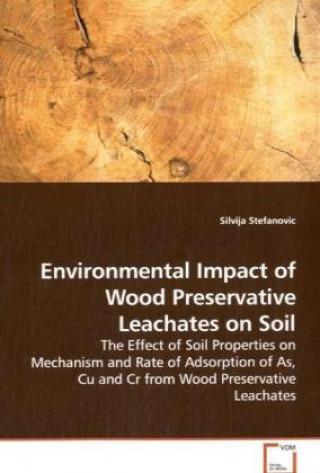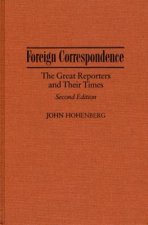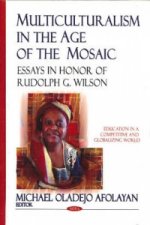
Kód: 06815730
Environmental Impact of Wood Preservative Leachateson Soil
Autor Silvija Stefanovic
Depending on the physical and chemicalcharacteristics of soil, adsorption of inorganiccomponents of leachates from preservative treatedwood can limit movement of contaminants to othercompartments (soil as a sink) and reduce their ... celý popis
- Jazyk:
 Angličtina
Angličtina - Vazba: Brožovaná
- Počet stran: 192
Nakladatelství: VDM Verlag Dr. Müller, 2008
- Více informací o knize

Mohlo by se vám také líbit
-

Broadview Anthology of Social and Political Thought
2645 Kč -

Foreign Correspondence
683 Kč -

Politics of Farce in Contemporary Spanish American Theatre
929 Kč -

Two Women Look West Notecard Collection
443 Kč -

Johan Gregor van der Schardt
1960 Kč -

Multiculturalism in the Age of the Mosaic
4394 Kč -

Neighbours and Networks
1105 Kč
Dárkový poukaz: Radost zaručena
- Darujte poukaz v libovolné hodnotě a my se postaráme o zbytek.
- Poukaz se vztahuje na celou naši nabídku.
- Elektronický poukaz vytisknete z e-mailu a můžete ihned darovat.
- Platnost poukazu je 12 měsíců od data vystavení.
Více informací o knize Environmental Impact of Wood Preservative Leachateson Soil
Nákupem získáte 171 bodů
 Anotace knihy
Anotace knihy
Depending on the physical and chemicalcharacteristics of soil, adsorption of inorganiccomponents of leachates from preservative treatedwood can limit movement of contaminants to othercompartments (soil as a sink) and reduce their toxiceffect by limiting bioavailability. Estimatedadsorption maxima of Cu CCA in organic and clay soilswere the same or higher than for Cu ACQ and Cu CA.The presence of preservative components in the soildecreased the yield and increased their accumulationin ryegrass. Uptake of As, Cu, and Cr in rye grasswas just as well predicted by total soil content aswith any of the bioavailable estimates. ACQ leachateshowed higher toxicity to germination of ryegrassseeds and Daphnia magna toxicity; it had a lowereffect on ryegrass growth than CCA leachate. Reactionof ACQ leachate with sandy soil components resultedin reduced toxicity to Daphnia magna. None of thecontaminated soils had a measurable effect onearthworms, although there was some preservativeuptake in the worms. CCA and ACQ had similar effectson soil microflora/fauna respiration. CA leachate hadlower toxicity to Daphnia magna and similar toxicityto other organisms as ACQ. Depending on the physical and chemical characteristics of soil, adsorption of inorganic components of leachates from preservative treated wood can limit movement of contaminants to other compartments (soil as a sink) and reduce their toxic effect by limiting bioavailability. Estimated adsorption maxima of Cu CCA in organic and clay soils were the same or higher than for Cu ACQ and Cu CA. The presence of preservative components in the soil decreased the yield and increased their accumulation in ryegrass. Uptake of As, Cu, and Cr in rye grass was just as well predicted by total soil content as with any of the bioavailable estimates. ACQ leachate showed higher toxicity to germination of ryegrass seeds and Daphnia magna toxicity; it had a lower effect on ryegrass growth than CCA leachate. Reaction of ACQ leachate with sandy soil components resulted in reduced toxicity to Daphnia magna. None of the contaminated soils had a measurable effect on earthworms, although there was some preservative uptake in the worms. CCA and ACQ had similar effects on soil microflora/fauna respiration. CA leachate had lower toxicity to Daphnia magna and similar toxicity to other organisms as ACQ.
 Parametry knihy
Parametry knihy
1712 Kč
- Plný název: Environmental Impact of Wood Preservative Leachateson Soil
- Podnázev: The Effect of Soil Properties on Mechanism and Rateof Adsorption of As, Cu and Cr from Wood PreservativeLeachates
- Autor: Silvija Stefanovic
- Jazyk:
 Angličtina
Angličtina - Vazba: Brožovaná
- Počet stran: 192
- EAN: 9783639063578
- ID: 06815730
- Nakladatelství: VDM Verlag Dr. Müller
- Hmotnost: 302 g
- Rozměry: 12 × 150 × 12 mm
- Rok vydání: 2008
Oblíbené z jiného soudku
-

Dune
216 Kč -

Haunting Adeline
621 Kč -

Berserk Deluxe Volume 2
1092 Kč -

White Nights
90 Kč -

Powerless
268 Kč -

Atomic Habits
330 Kč -

Dune Messiah
228 Kč -

Berserk Deluxe Volume 3
1142 Kč -

One Day
221 Kč -

Berserk Deluxe Volume 1
1115 Kč -

Iron Flame
368 Kč -

Surrounded by Idiots
213 Kč -

Harry Potter and the Prisoner of Azkaban (Minalima Edition)
993 Kč -

Gravity Falls Journal 3
443 Kč -

Heaven Official's Blessing: Tian Guan Ci Fu (Novel) Vol. 1
440 Kč -

The Creative Act
568 Kč -

Dune
276 Kč -

Hunting Adeline
624 Kč -

A Little Life
290 Kč -

Children of Dune
230 Kč -

Heaven Official's Blessing: Tian Guan Ci Fu (Novel) Vol. 2
427 Kč -

Bungo Stray Dogs, Vol. 8 (light novel)
383 Kč -

Percy Jackson and the Olympians 5 Book Paperback Boxed Set
944 Kč -

Solo Leveling, Vol. 1
440 Kč -

The Prisoner's Throne
247 Kč -

Court of Thorns and Roses
268 Kč -

Cry Baby Coloring Book
276 Kč -

Fourth Wing
405 Kč -

Icebreaker
199 Kč -

Berserk Deluxe Volume 6
1089 Kč -

Avatar, the Last Airbender: The Kyoshi Novels (Box Set)
986 Kč -

The 48 Laws of Power
601 Kč -

House of Leaves
611 Kč -

Twisted Lies
213 Kč -

Dune Messiah
272 Kč -

No Longer Human
359 Kč -

48 Laws Of Power
331 Kč -

Twisted Games
213 Kč -

Caraval Paperback Boxed Set
902 Kč -

Solo Leveling, Vol. 2
468 Kč -

Open Circuits
907 Kč -

Berserk Deluxe Volume 5
1119 Kč -

Heaven Official's Blessing: Tian Guan Ci Fu (Novel) Vol. 3
476 Kč -

Berserk Deluxe Volume 4
1292 Kč -

Court of Mist and Fury
206 Kč -

SOLO LEVELING V08
436 Kč -

English File Upper Intermediate Multipack A (4th)
531 Kč -

CHAINSAW MAN V14
251 Kč -

Before the Coffee Gets Cold
184 Kč
Osobní odběr Praha, Brno a 12903 dalších
Copyright ©2008-24 nejlevnejsi-knihy.cz Všechna práva vyhrazenaSoukromíCookies



 Vrácení do měsíce
Vrácení do měsíce 571 999 099 (8-15.30h)
571 999 099 (8-15.30h)